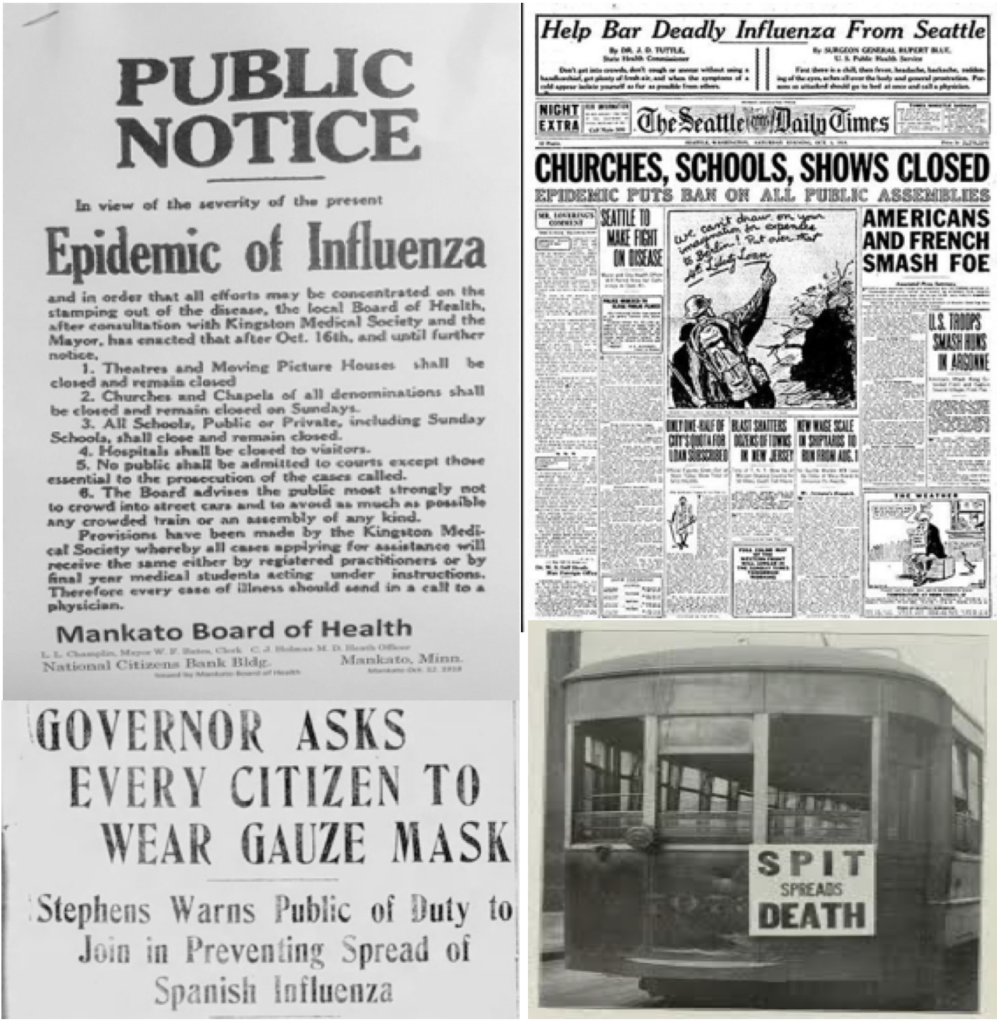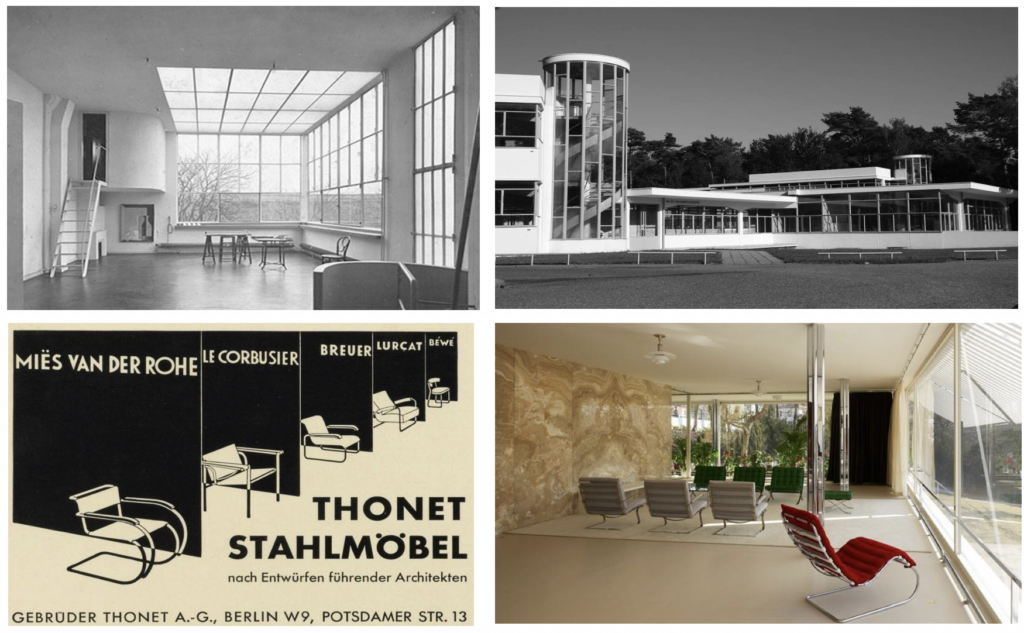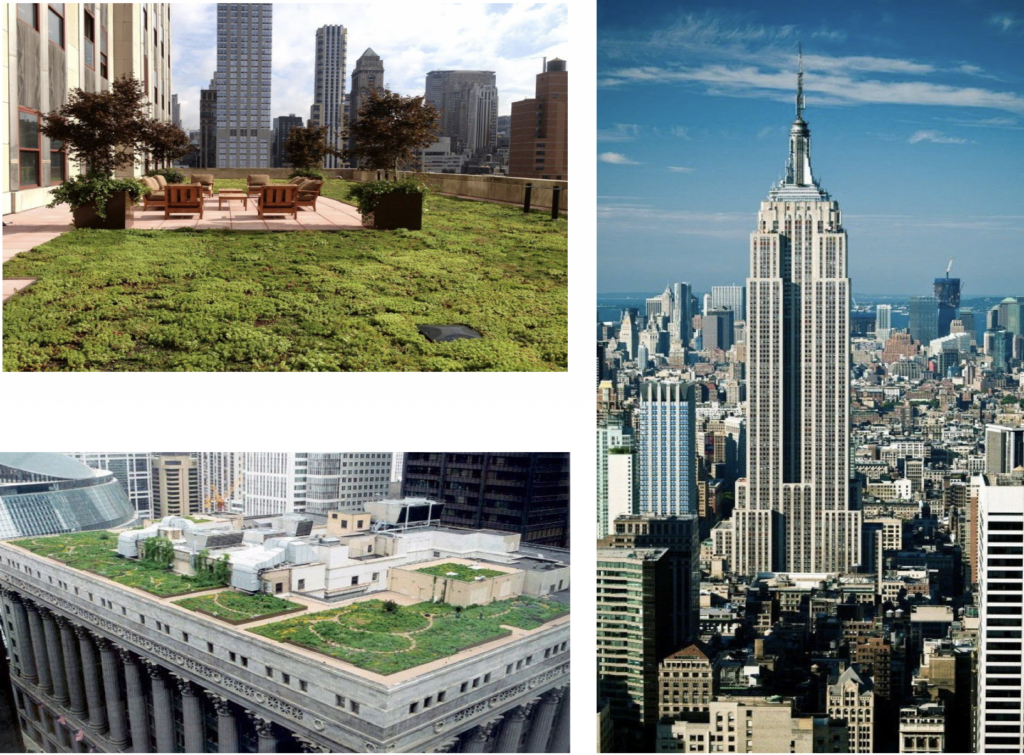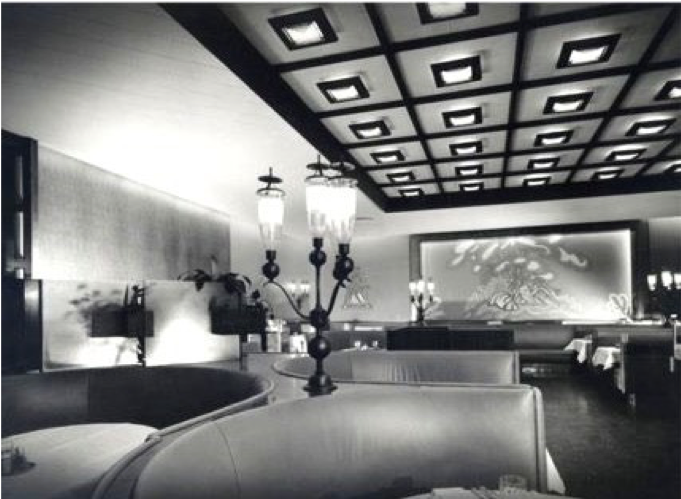IS IT 1919 OR 2020?
By: Ted Konigsberg, President
Infinity Commercial Real Estate

AS YOU CAN SEE IN THESE OLD PHOTOS, WE’VE BEEN HERE BEFORE.
- WHAT CHANGES TO OUR BUILDINGS AND CITIES RESULTED?
- WHAT CHANGES CAN WE EXPECT TODAY?
After months of conference calls, Zoom videos and webinars, only now is our industry’s vision of the new physical world beginning to emerge.
If the past is prologue, we can predict the future through research of the structural changes that occurred after the Cholera Epidemics of the 1800’s the Typhoid Epidemics of the 1800’s & 1906-1907), and the Spanish Flu of 1918 -1919.
Six cholera pandemics in the 19th century cost hundreds of thousands of lives. The renovation of Paris’ and London’s infrastructures followed, as did the construction of New York’s Central Park in 1857.
Upgraded sanitation, broadened streets and open public areas. The Spanish Flu took over 50 million lives around the world. Robert Koch’s discovery of the tuberculosis bacillus in 1882, transmitted by droplets (sound familiar?) gave rise to sanitoriums, buildings designed to house, treat, and isolate patients, emphasizing strict hygiene and ample exposure to sunlight and air.
The beginning of the 20th Century gave birth to Minimalism and Modernism. Victorian décor (soft fabrics, velvet drapes and wall coverings, small rooms, carpets and rugs) where dust and germs could linger and become vectors of disease, was replaced by modern stark designs, with minimalist furniture and cleanable surfaces like tile, glass and steel. Buildings were designed to bring light and fresh air to the occupants. The visionary Swiss architect Le Corbusier designed structures that included sinks at the entrances: Today, this survives as the guest or half bath. Open terraces, roof gardens, skylights and cross ventilation became prevalent. Rooms were large, open, airy. These photos are of buildings and interiors 85 -100 years old!

Dust lodged in decorative features was the enemy of hygiene. Designers used lightweight, washable materials. Michael Thonet used bentwood and cane, Aalto used bent plywood, and Marcel Breuer and Mies van der Rohe used tubular steel. Furniture was light and easily moved for cleaning, to deprive dust, germs and insects of hiding places in the dark.
By the 1920’s air conditioning was viable and in use in buildings of public accommodation. Yet, the Empire State Building has multiple open-air decks, and single hung, OPENING windows, as do vertical buildings of the time. Light, fresh air, social distancing…

Restaurants changed too. Below is a photo of the original Lawry’s The Prime Rib, built in Los Angeles in the 1920’s. Note the banquette seating for isolation and the materials used for surfaces throughout the room, all easily cleanable.

The events of the early 1900’s impacted our collective psychology, and the effects long outlived the events themselves.
The changes in our constructed environment became the norm, but the difficult lessons were forgotten as the generations that lived through these pandemics passed. We are now compelled to relearn them.
OK, SO YOU’VE LOOKED AT SOME COOL OLD PHOTOS AND ARE TOTALLY BORED BY MY MUSINGS… WHAT DOES THE FUTURE LOOK LIKE?
- CIVIL ENGINEERING, PLANNING: Cities will expand open areas, such as parks and streets. No car zones, which London and Paris have had for many years, will become common in shopping and entertainment districts, to allow for distancing and outdoor tables and exhibits. Expect significant upgrades to water and sanitation systems. Working from home has created huge demand for high speed internet access: Fiber optic installations, new towers for 5g. The death of the automobile has been vastly over-hyped. When will you feel safe traveling by train, bus, or subway? When will you feel safe ridesharing? So, upgrades to parking and roads, less construction of new public transportation. A return to the suburbs. Rezoning and reconfiguration of many high-density buildings, such as failed hotels and offices.
- EXISTING VERTICAL BUILDINGS: Major upgrades to HVAC systems, such as UV lights in air handlers, HEPA filters, coil disinfectant systems. Wall sconces in hallways replaced by UV light air purifiers. Larger washrooms with hot water sinks and touchless faucets. Tile instead of carpeting. Reconfigured common areas for distancing. Rooftop gardens. Cleanable wall coverings and furniture. Touchless door systems. Voice-activated elevators.
- NEW VERTICAL BUILDINGS: In addition to the above, opening windows, Balconies, open-air decks, and rooftop amenities, like running tracks and gardens. Wider and windowed stairwells and hallways, larger and more elevators. Perhaps a return of the atrium concept with skylights. Much larger common areas.
- RESIDENTIAL: Do you feel safe walking through a crowded lobby, pushing buttons on an elevator with multiple people in it, passing your neighbors in the hallway? Not having access to the building gym, restaurant, or pool if there’s another outbreak in the future? Vertical condos and apartment buildings will suffer. On the lower-end, garden style apartments with their stairwells and patio or balconies will become desirable again. For larger residences, townhouses and single-family homes (sale and rent) will benefit. A fenced yard will matter. High speed internet will matter, as you will spend more time working from your “cave”. A half bath at or near the entrance will matter. A spare room separate from the main living areas with a dedicated washroom for use as your office, grown kids room, or parent’s room (will you send mom to an assisted living facility unless you have to?) will be a very desired feature, as will an entry “parlor” separated from the living areas.
- OFFICE: A protracted decline. Companies realize their employees can effectively work from home, while reducing risk of infection and corporate liability. In high-tech industries, international employees will not have to be relocated to work in the US; software engineers can stay in Bangalore and be just as productive via VPN, WebEx and Zoom. Why apply for a Visa? An offset will be a greater amount of footage required per occupant to effect social distancing, but that won’t be enough to fully compensate the increased vacancy. The “We-Work” co-working and hoteling concept will face demise, but operators such as Regis will thrive. Rents will fall, CAP rates will rise. A shift to single story walk-in, non-CBD (suburban) property locations, much of which will be repurposed retail space and industrial/office flex buildings.
- INLINE RETAIL: Will suffer in the short term but rebound strongly. Local services still matter. Convenience stores, liquor stores, dry cleaners, hair salons, drug and grocery stores are necessary. Expect countless neighborhood restaurant closings, but also expect “virtual” restaurants (kitchens) to emerge, as online ordering will continue. Outdoor seating will help make up for lost table density. Expect alternate types of uses, like office, medical and dental.
- BIG BOX RETAIL: Power centers give their tenants something malls can’t: Control of their sites. Curbside pickup will continue. Further, many of these are in “last mile” locations. Think of Best Buy, which is thriving. They use their stores as distribution centers: When you order from them, chances are the item comes right from store inventory, which how they compete with Amazon on delivery. Expect to see more of this model. Amazon’s share of the total US retail market is only 3%. Walmart does 3 times the volume of Amazon, and their operations are extremely efficient and improving. Those retailers with a brand that matters to consumers, an efficient and friendly online experience and a store centric logistics model will capture market share. As to broad-line big boxes like JC Penney, Sears, Neiman-Marcus… They will continue to suffer, and possibly not survive.
- MALLS: Only the best operators will endure. Those that do will be greatly changed. Most failed anchor stores will require complete repurposing and reconstruction. Both large and small tenants will want outward facing ingress and egress, so malls will have to face outwards, not inwards. With their large land areas, the best locations will make those changes, and attract outparcel operators. Those that survive will embrace mixed use: Residential, office, and even “last mile” logistics facilities will replace many existing tenants. Rents will fall. The short-term pain will be immense, and failed malls may be a great investment opportunity for developers.
- HOSPITALITY: Central Business District facilities will be badly impacted. We may see numerous properties repurposed. To survive, touchless check-in and doors, expanded common areas. No significant new construction of CBD and airport properties, pure survival mode for years to come. As folks drive more and fly less, roadside motels and extended stay properties, with outdoor room entrances and kitchenettes, will thrive again. Soon, companies like Airbnb will have a resurgence, continuing to capture market share, as they offer travelers privacy and control.
- INDUSTRIAL: The lack of supply chain reliability has become painfully evident, and as time to delivery becomes increasingly important, manufacturing will return to our shores. Even Grandma orders online now and expects everything to be delivered immediately. Manufacturers will gladly pay a little bit more to source components from a reliable US based supplier, instead of waiting a month (at best) for a “slow-boat from China”. Further, automated manufacturing depends much less on the cost of labor than the cost of electricity and real estate: Both are cheaper here than in Asia.
As retail become more reliant on fast delivery, expect “last mile” locations to excel, along with dedicated cold chain distribution facilities. Many local and regional tenants will ditch their dedicated office locations and seek out industrial flex with 20% to 40% office components, so they can reduce overall rents, control access and exposure, and feel safe. Rear loaded multi-tenant properties with curb appeal and high parking ratios are gold!
MANUFACTURING, INDUSTRIAL FLEX AND LOGISTICS WILL THRIVE.
